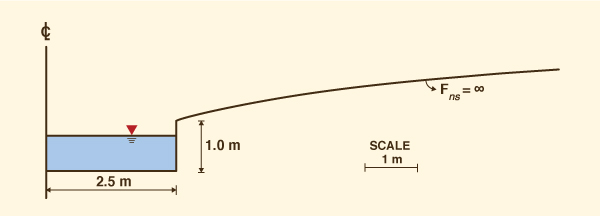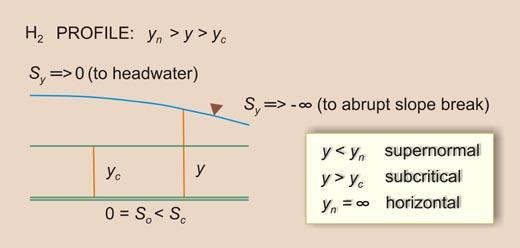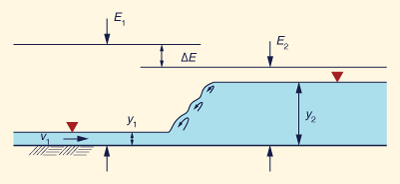SPRING 2016
FINAL EXAM
MONDAY, MAY 9, 2016, 1530-1730
Name: __________________________________ Red ID ____________________ Grade: ________
Instructions: Open book, open notes. Use engineering paper. When you are finished, staple your work in sequence (1 to 5), and return this sheet with your work.
(20%) An inherently stable channel, of constant hydraulic radius in the overflow section (see figure below), has a rectangular [base] channel section of width B = 5 m, and flow depth
d = 1 m . Assuming for simplicity a trapezoidal cross section for the overflow section (i.e., the flow above d = 1 m), provide a rough estimate of the top width at a depthd = 2 m , measured from the channel bottom.
(20%) A horizontal channel of length L = 500 m is designed to convey Q = 5 m3/s from a reservoir to a free overfall. The bottom width is b = 2 m, and side slope z = 1.5. The channel is lined with gabions and the Manning's n recommended by the manufacturer is n = 0.028.
- What is the headwater depth (accuracy to 1 cm) required to pass the design discharge?
- What is the tailwater depth, that is, the critical flow depth at the downstream boundary?
[Hint: Use ONLINE_WSPROFILES_32].

(20%) Calculate the initial and sequent depths y1 and y2 of a hydraulic jump, given the unit-width discharge q = 0.1 m2/s, and the energy loss ΔE = 0.65 m. [Hint: Assume a low F1, then calculate y2/y1, y1, v1 and a new F1. Compare new value with assumed value; if different, increment F1 a suitable amount and iterate, until a match is obtained].

(20%) An irrigation canal has a mean velocity u = 0.7 m/s, mean flow depth d = 1 m, and slope
S = 0.005 m/m. Estimate the minimum time of gate opening To to avoid a surge.(20%) You are observing the rising flood stage of a major river in a study reach AB of length L = 10 km. At your observation point at the downstream point B, the discharge is QB = 300 m3/s and the stage is rising at the rate of rB =
3.2 mm/hr. The average surface width of the river in the study reach is W = 180 m. Estimate the present discharge at point A. How could this estimate be improved?